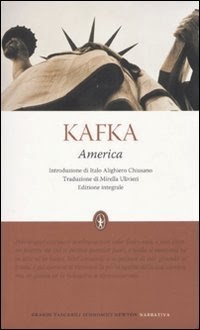

Thus he identifies with the people at the bottom of the American racial hierarchy. As Jennifer Marston William (2003) points out, Holitscher’s book includes the photo of a lynched black man, and this may explain why, at the end of the novel, Karl says that his name is ‘negro’. Holitscher’s socialist account of America was ambivalent: he admired its industrial progress, but deplored its social and racial inequalities. Kafka had never been to America many of his descriptions were inspired by Arthur Holitscher’s book Amerika heute und morgen ( America today and tomorrow 1911-12). the Statue of Liberty is depicted holding a sword. This original title emphasises the difficulty which the seventeen year old protagonist Karl Rossmann has in maintaining and asserting his own identity in America. It could also be translated as ‘The Boy who Disappeared’. However, the title which Kafka gave to this novel was Der Verschollene, ‘The Man who Disappeared’.

Kafka’s first novel is often known as Amerika in English, and this was the title used by Kafka’s friend Max Brod when he first published the novel in 1927. Der Verschollene The Man who Disappeared Amerika


 0 kommentar(er)
0 kommentar(er)
